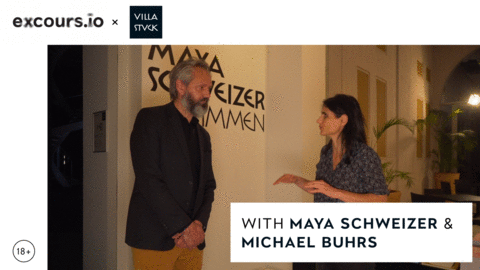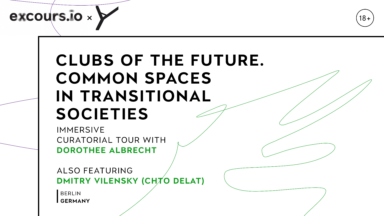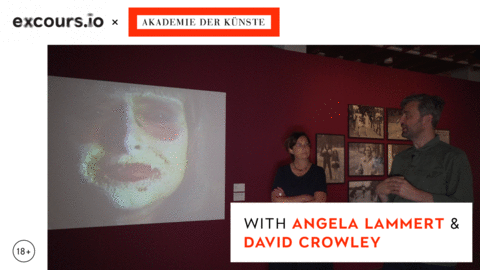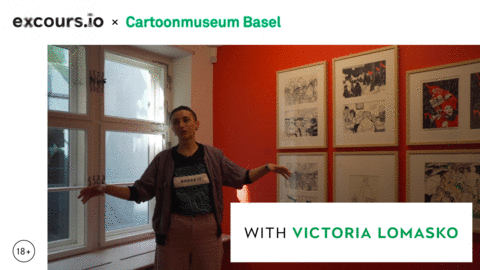Maya Schweizer – Voices
Human perception of time often resembles a collage — fragmented and layered, shaped by memory and experience. Berlin-based artist Maya Schweizer captures this complexity through her unique language of short film. In her work, everyday spaces become carriers of memory, interweaving found footage, situational observations, and soundscapes to create immersive, multifaceted narratives. Schweizer’s art subtly explores the intricacies of cultural identity and the role individuals play as political actors, encouraging deeper reflection on how we engage with our surroundings and their embedded histories. In her solo exhibition Stimmen (Voices) at the Museum Villa Stuck, composed of 10 films spanning the past 14 years, Schweizer gives voice to those who have disappeared, recounting stories of violence, memory, and loss, particularly within the context of German history and Munich’s past. By blending personal and collective histories, her work oscillates between documentation and staged reality, using urban spaces as laboratories for examining overlapping historical layers. As viewers dive into the culture of remembrance, Schweizer uncovers new and often unsettling depths of human memory, sparking a reflection on the invisible ties between people, places, and their histories.
Why should you watch this?
CLUBS of the FUTURE. Common Spaces in Transitional Societies
Why should you watch this?
Notes from the Underground. Art and Alternative Music in Eastern Europe 1968-1994
The exhibition Notes from the Underground. Art and Alternative Music in Eastern Europe 1968–1994 examines the intersection of underground music and visual arts under communist regimes in Eastern Europe. It highlights how rock, punk, and new wave music, alongside performance art, fashion, and film, became tools of countercultural expression against state control. In response to censorship and scarcity, artists and musicians created homemade instruments, produced Samizdat magazines, and distributed recordings. The exhibition underscores the role of improvisation and irony in resisting authoritarianism, with works from Poland, Yugoslavia, the Soviet Union, and Czechoslovakia, offering a new perspective on how art and music intertwined as forms of dissent.
Why should you watch this?
In a time where freedom of expression remains a contested issue, Notes from the Underground. Art and Alternative Music in Eastern Europe 1968–1994 draws vital parallels between past and present struggles against authoritarianism. By showcasing how rock, punk, and new wave music intertwined with visual arts to resist state control, the exhibition highlights the subversive power of creativity. From DIY instruments to Samizdat magazines, it captures the spirit of rebellion and improvisation that thrived under repressive regimes, making it a timely exploration of art’s role in confronting oppression and fueling collective resistance.
Katrin Nenasheva. Between Here and There: Stories of City Isolations
Between Here and There: Stories of Urban Isolation is an exhibition by Katrin Nenasheva that explores the lives of individuals permanently isolated in psychiatric institutions. In her performance, Nenasheva traversed city streets wearing virtual reality glasses displaying panoramic images from these institutions, highlighting the barriers that separate their world from ours. She engaged with the public in various locations, including the subway and Red Square, inviting them to experience her perspective and share the motivations behind her work. The exhibition presents documentation of her journey, allowing visitors to engage with virtual reality themselves, fostering a dialogue between “here” and “there.” This immersive experience encourages reflection on societal isolation and connection.
Why should you watch this?
Katrin Nenasheva’s exhibition Between Here and There: Stories of Urban Isolation offers a profound exploration of the often-overlooked lives of individuals in psychiatric institutions. By donning virtual reality glasses that display panoramic views of these spaces, Nenasheva creates a striking connection between the isolated and the public, inviting visitors to step into her shoes as she navigates familiar urban landscapes. This immersive performance, paired with documentation of her interactions in locations like the subway and Red Square, blurs the lines between separation and engagement. Through this unique experience, attendees are encouraged to confront their perceptions of mental health, societal isolation, and human connection, prompting vital conversations about empathy and understanding in our communities.
Tobias Zielony. Maskirovka [Concealment]
Why should you watch this?
Tobias Zielony’s “Maskirovka” is a compelling reflection on the resilience and creativity of Kyiv’s queer techno scene, resonating profoundly in today’s world marked by social and political upheaval. Set against the backdrop of the post-Maidan era, this exhibition underscores the ongoing struggle for identity and belonging in the face of repression and misinformation, themes that echo in various global contexts today. By employing the concept of “maskirovka”—a tactic of deception used in conflict—Zielony captures how both artists and activists navigate the complexities of expression and resistance. His photographs and dynamic animated film form a visual narrative that invites critical reflection on the intersection of culture, politics, and personal agency. As societies grapple with fragmentation and polarization, “Maskirovka” reminds us of the power of art to forge connections, challenge norms, and provoke dialogue, making it an essential commentary on contemporary struggles for freedom.
Clemens von Wedemeyer – Mehrheiten [Majorities]
The exhibition critically examines the evolution of mass mobilization and crowd dynamics in both historical and contemporary contexts, drawing inspiration from Elias Canetti’s “Crowds and Power.” Set against the backdrop of the GfZK’s new architectural space, the exhibition engages with the complexities of collective action, exploring how digital public spheres shape democratic participation while simultaneously being exploited for exclusionary practices. Featuring a rich array of video installations and cinematic works, including the new production “70.001,” which reimagines the 1989 Leipzig demonstrations, “Majorities” invites reflection on the nuances of social behavior and the implications of simulated experiences in gaming and surveillance. Through this thoughtful presentation, Wedemeyer prompts us to consider the intertwining narratives of isolation and community, resonating powerfully in today’s fragmented society.
Why should you watch this?
Watching this guided tour is crucial in our current landscape marked by digital polarization and the resurgence of mass movements. As societies grapple with issues of identity, representation, and exclusion within online spaces, this exhibition offers a vital framework for understanding how crowd dynamics shape our collective psyche and political discourse. In an age where social media can amplify divisive ideologies, gaining insights into the historical and psychological underpinnings of mass mobilization is essential. The tour encourages participants to critically examine how these dynamics operate today, heightening awareness of the fine line between community engagement and manipulation. By exploring these themes, viewers are invited to reflect on their agency within the digital public sphere, making the experience not just an exploration of art and history, but also a compelling call to engage thoughtfully in the ongoing dialogue about democracy and social responsibility in our interconnected world.
Victoria Lomasko. Other Russias
Victoria Lomasko’s retrospective at Cartoonmuseum Basel invites viewers to engage deeply with her explorations of Russia’s marginalized communities. This vibrant exhibition showcases her striking murals and drawings, which intricately depict the lives of LGBT activists, sex workers, and migrant laborers. Through her keen observations and bold, expressive style, Lomasko highlights the social injustices and political repression faced by these groups.
Why should you watch this?
Victoria Lomasko’s retrospective at Cartoonmuseum Basel resonates profoundly with today’s global landscape of social justice and human rights. As she illuminates the lives of Russia’s marginalized communities, her work serves as a poignant reminder of the ongoing struggles faced by those often overlooked in society. In a world increasingly confronted with issues of inequality, discrimination, and political repression, Lomasko’s murals and drawings act as both a testament to resilience and a call for advocacy. By capturing the essence of these lived experiences she invites audiences to reflect on the shared responsibility we hold in addressing injustices, igniting conversations that transcend borders. The exhibition serves as both a visual narrative and a call to action, reflecting her long-standing commitment to human rights advocacy. This exhibition underscores the enduring relevance of her work in fostering empathy and inspiring change in our contemporary era.





![Tobias Zielony. Maskirovka [Concealment] Tobias Zielony. Maskirovka [Concealment]](https://cloud.excours.io/film-previews/tobias-zielony.gif)
![Clemens von Wedemeyer – Mehrheiten [Majorities] Clemens von Wedemeyer – Mehrheiten [Majorities]](https://cloud.excours.io/film-previews/clemens-von-wedemeyer.gif)
